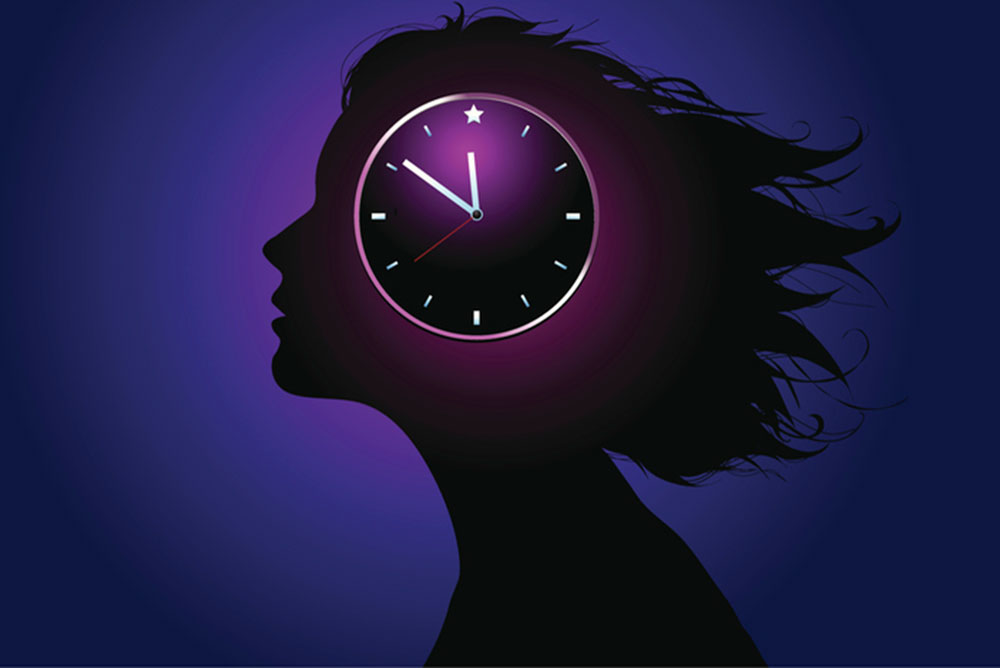
iStock
NIGHT OWLS are finally getting some respect: an official sleep chronotype, which refers to “individual tendencies toward the timing of activity and rest each day;” and some evidence that they “tend to be more productive and have more stamina during the day.”
“Humans can be categorized as early (EC), late (LC) or intermediate (IC) chronotypes,” according to researchers in Aachen, Germany. Beyond sleep/wake timings, chronotypes show distinct patterns of cognitive performance, gene expression, endocrinology and lifestyle.”
The news is not all good for night owls, who tend to weigh more, have higher blood pressure and die sooner than early risers. In the Aachen study, their brain scans showed less white matter, which raises their risk of depression, schizophrenia and impaired cognitive function.
By contrast, larks—especially very “short-sleepers,” who sleep less than six hours a night—tend to be optimistic and driven, and resilient against stress and pain, according to UCSF neurologists Louis Ptacek and Ying-Hui Fu, who studied genetic differences in two families, each with some members who “never slept more than six hours a night.”
The total “number of areas of the genome” that influence waking time is now at 351, according to a recent study at Mass General and the University of Exeter that examined 700,000 private genomic analyses done by 23andMe.
“Why some people are up with the lark while others are night owls is because of differences in both the way our brains react to external light signals and the normal function of our internal clock,” explained Exeter geneticist Samuel E. Jones.
Because the body-clock cycle is slightly longer than 24 hours, the retina plays a key role in realigning the body clock slightly each day, the researchers found. It confirmed the higher risk for night owls of mental health problems but did not support strong links to diabetes or obesity.
Understanding the “genetics of sleep and activity timing” in the general population offers insights into possible therapy for those with insomnia and aberrant sleep chronotypes, such as Delayed Sleep Phase Disorder (DSPD), according to Mass General anesthesiologist Jacqueline Lane.
Up to one-third of people living in industrialized countries suffer from insufficient sleep, which interferes with the body’s ability to repair tissue, synthesize hormones and grow muscles. Poor sleep can also cause epigenetic changes in DNA, according to a study on the impact of night shifts on 49 “healthy, full-time doctors.” Genetic analysis of those on call overnight showed more DNA breaks and lower “baseline DNA repair gene expression.”
The most recent age-specific, sleep durations, recommended by the National Sleep Foundation, divided adults over age 25 into two groups and added a “may be appropriate” category. For those 64 and under, the “may be appropriate” range was 6 to 10 hours, with 7 to 9 hours “recommended”; for those 65 and older, “may be appropriate” ranged from 5-6 to 9, with “recommended” between 7 and 8.
With D.S.P.D., a “circadian rhythm disorder,” the entire cycle is delayed. Sufferers have difficulty falling asleep but no trouble obtaining a full night’s sleep if they sleep very late the next day, Montefiore Medical Center sleep specialists Shelby Freedman Harris and Michael Thorpy wrote in a New York Times blog. In contrast, those with insomnia usually have some combination of difficulties falling asleep, staying asleep and waking too early, and of feeling insufficiently rested in the morning.
“Chronotherapy” for DSPD (also called delayed sleep phase syndrome) involves delaying the sleep period by two or three hours for each cycle until bedtime comes around to the one desired—but requires patients to sleep during the daytime for several days.
Alternatives include bright-light therapy in the morning with a light box (10,000 lux) for an hour or two—or sunlight; and taking melatonin early in the evening to “pull the circadian drive earlier.”
While DSPD most often affects young adults, the reverse problems of Advanced Sleep Phase Disorder often occur among older people, who go to bed very early (6 to 9pm) and wake very early (2am to 5am)—and who complain of fatigue in the late afternoons.
Testing for sleep disorders usually begins with a sleep diary. “Actigraphy,” using a wrist motion monitor to record activity for days or even weeks, or spending a night in a sleep clinic can help confirm the problems.
Besides bright light therapy, behavior therapy involves keeping to regular sleep-wake times and avoiding naps, as well as exercising and avoiding caffeine and nicotine within several hours of bedtime.
For night owls, too, well-timed, bright morning light can help shift their habit, although Charlottesville nurse practitioner Ellen Wermter would first ask the question: “Do you really need to make the shift?”
—Mary Carpenter
Every Tuesday, well-being editor Mary Carpenter reports on health news you can use.

